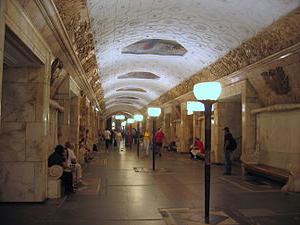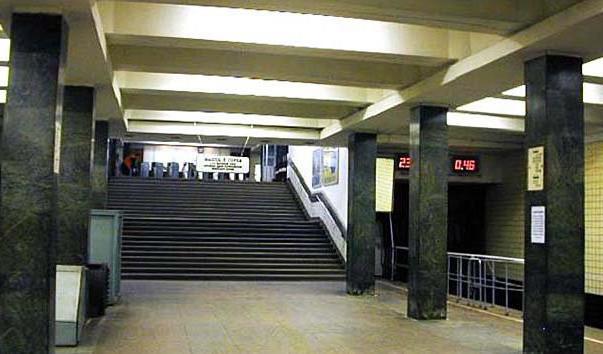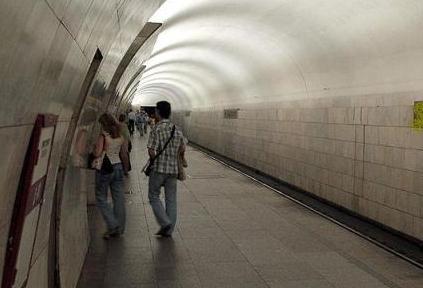Novokuznetskaya metro station
Who would have thought that every day Muscovitesare in a completely unique place, what is the metro station "Novokuznetskaya"? But, nevertheless, this is so. The station was built by the architects Bykova and Taranov. It was opened in 1943, in the middle of the Great Patriotic War, which affected its appearance.

On the ceiling panels of the metro station "Novokuznetskaya"depicted scenes from the life of a utopian communist society - harvesting a rich harvest, building houses, etc. These mosaics can rightly be called invaluable, because they were made in 1942 by VA Frolov, based on the sketches of the famous AA Deineka in besieged Leningrad. At first he worked together with three employees of the workshop, but he completed his work alone. All this time the workshop was not heated and was lit only with the help of a kerosene lamp.
Having finished work and carrying out trucks from the panel tofamous "road of life" on Ladoga, Vladimir Alexandrovich died of starvation and hunger, like many blockade men. And only recently at the station there was a memorial plaque in his honor. In addition to Novokuznetsk, Frolov's works can also be seen at Mayakovsky and in St. Petersburg: in the Cathedral of the Resurrection of Christ on Blood (the Church of the Savior on Blood), in the tomb of the Peter and Paul Fortress and at the Nabokovs' house.

Architects who designed the station, N.A. Bykova and IG Taranov, were married. Novokuznetskaya metro station was their second joint project after Sokolniki. This creative tandem of talented architects also presented Moscow with the "Belorusskaya" ring, "VDNKH", "Sportivnaya", "Izmaylovskaya", "Shchelkovskaya" and "Vernadsky Prospekt".
Nadezhda Alexandrovna in her memoirswrote that originally mosaic panels were designed for "Paveletskaya", but during its construction and decoration it was decided not to use interior lighting, and they were unnecessary. Her husband returned to Moscow from the evacuation and wrote to her about these panels. And although she was against their use, she could not dissuade her husband.

Illustration for the history of Russia in times of war andpeace time - that's what "Novokuznetskaya" is. The metro can not be imagined without Moscow today: it is located in the center of Moscow, on Pyatnitskaya Street, it enters a large interchange node together with the Tretyakovskaya stations of the Kalinin and Kaluga-Riga lines. Near the ground station lobby there is a small square. The daily passenger flow through the entrance and exit to the station is 43 and 36 thousand people, respectively. And few of them think about the history of creating an amazing metro station "Novokuznetskaya".
</ p>




